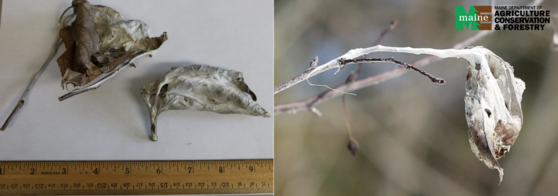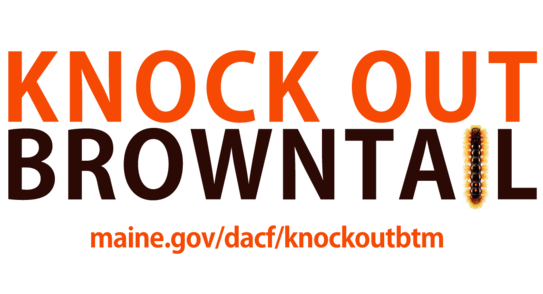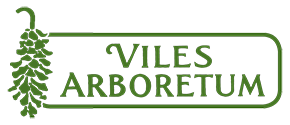February 2, 2024 - Maine Department of Agriculture, Conservation and Forestry: Browntail Moth (BTM) caterpillars have been an ongoing nuisance in Maine; causing tree defoliation and rashes in humans. Reduce your chances of encountering this pest on your property by learning how to recognize and remove their winter webs from your trees during February, Browntail Moth Awareness month.
February Checklist - Reduce Browntail Impacts:
- Recognize browntail winter webs (see photo below). Check the tips of tree branches for palm-sized (2-5 inches long) webs tied to the leaf stem with white silk. Browntail strongly prefer to make their webs in oak, apple, crabapple, cherry, birch, poplar, shadbush, and rose bushes.
- Remove browntail winter webs. Use hand snips or an extendable pole pruner in areas within reach of the ground and away from hazards such as powerlines. Protect your eyes and skin during removal as toxic caterpillars may still be present. After removal, destroy webs:
- Obtain burn permit and burn them in a contained fire, or
- Soak them in a bucket of soapy water for a few days before disposing
- Recruit professional help when you can't remove winter webs. Licensed arborists or FAA-certified drone operators can help remove webs during the winter. Licensed pesticide applicators may be able to use pesticides on trees with browntail during early spring to reduce browntail populations.
- Reach Out if you find browntail in your neighborhood or community. The more neighbors, businesses, and others that work together to respond to browntail, the better the results.

(Left) Browntail webs that have been removed from a tree; note that they are at the tips of branches and are palm-sized. (Right) Browntail web still attached to the tip of a branch; note that on a sunny day, the white silk surrounding the web makes the web easier to find in a tree.![]()
Additional Resources:
- Watch a video "Browntail Moth Detection in Maine" created by Maine entomologists to learn how to detect browntail on your property.
- Read our newly updated Browntail Moth Brochure to learn more about winter web removal and other browntail management tips.
- Check out our detailed Browntail Moth FAQ page for all things biology, management, human & tree health, and public policy.
- Use our Browntail Moth Interactive Map to see where we've documented browntail moth presence through aerial and winter web surveys.
The MFS Forest Health and Monitoring Division coordinates within state government, local communities, and directly with citizens to respond to this issue. Winter is the best time to clip and destroy BTM winter webs within reach or hire licensed arborists or pesticide applicators to reduce out-of-reach populations. Comprehensive BTM information and tools compiled by MFS, Board of Pesticides Control, Maine Center for Disease Control, the University of Maine and other partners including research, infestation tracking, FAQs, and educational resources for communities, municipalities, businesses, and healthcare providers, are available on maine.gov/dacf/knockoutbtm.

Source: https://content.govdelivery.com/accounts/MEDACF/bulletins/387f5da

